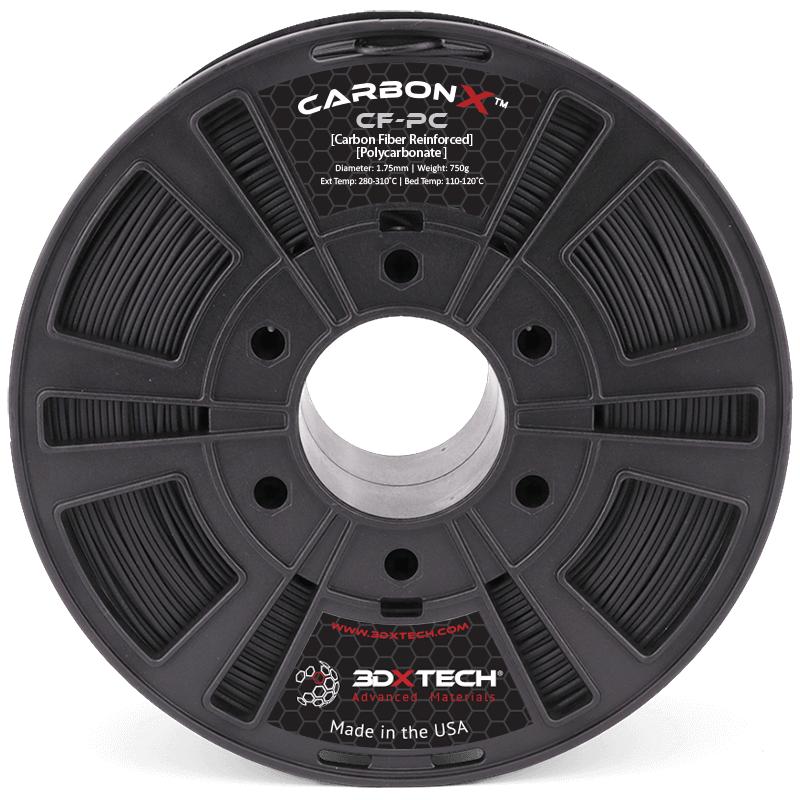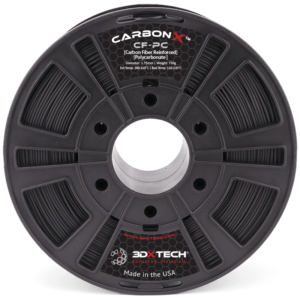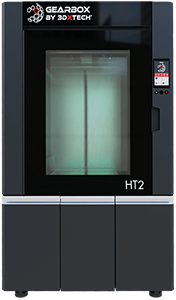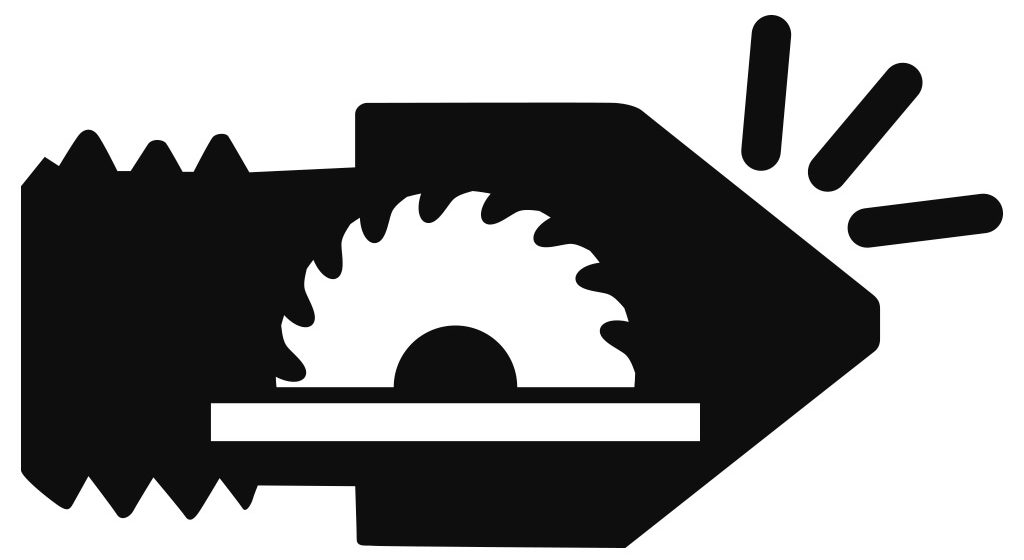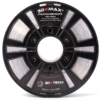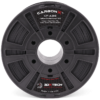CarbonX PC+CF
$88.00 – $228.00
CarbonX™ PC+CF is made using Sabic Lexan® Polycarbonate and reinforced with premium high-modulus carbon fiber. This material offers excellent thermal properties, strength & stiffness, superior dimensional stability, and an amazing surface finish.
CarbonX™ PC+CF Carbon Fiber Reinforced Polycarbonate
CarbonX™ PC+CF is a high-performance carbon fiber reinforced polycarbonate filament. This material is ideal for anyone that desires a structural component with high heat, high stiffness, excellent surface quality, and dimensional stability. Polycarbonate has a Tg of 147°C and offers some of the highest thermal performance on the 3D printing market.
Gearbox HT2™ 3D Printer: Print industrial-grade parts using our PC+CF and more with the new Gearbox™ HT2 High-Temp 3D Printer.
Print Recommendations
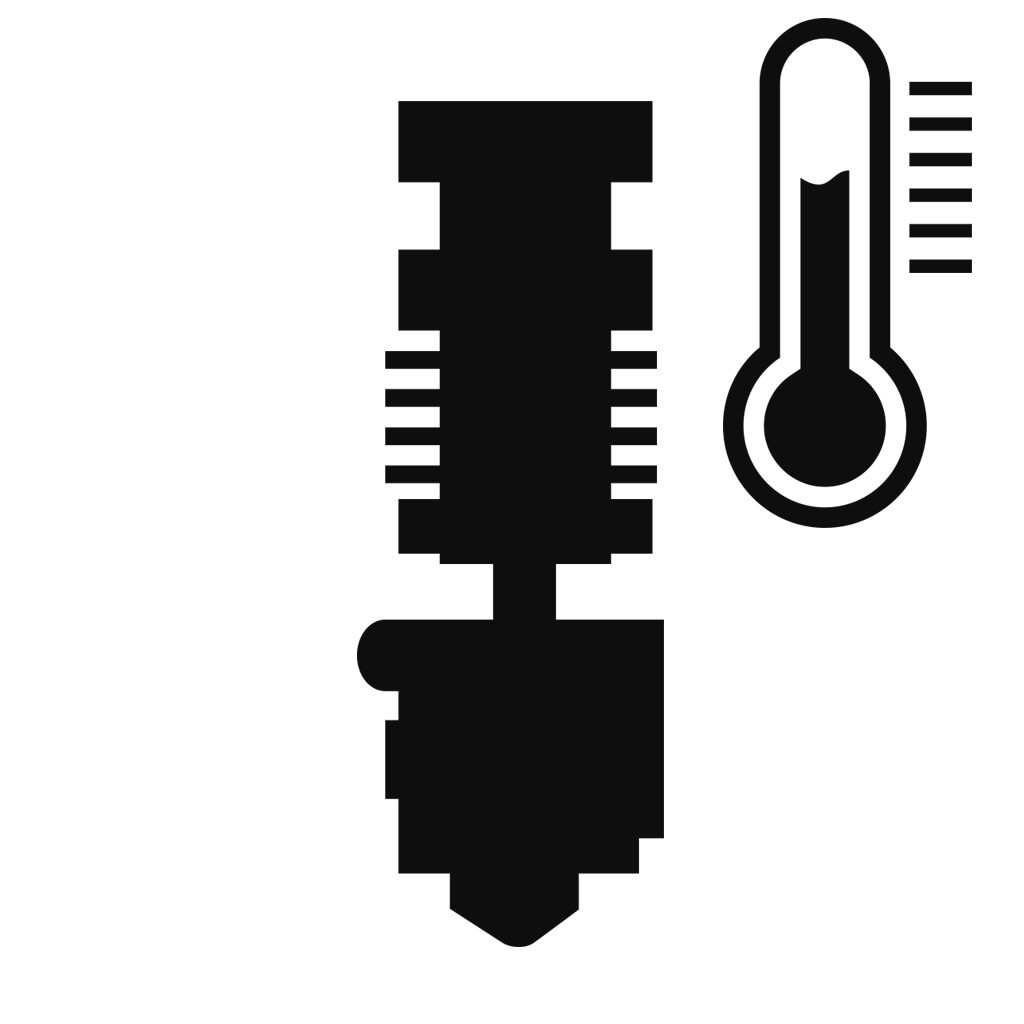
Extruder Temp
280-310°C
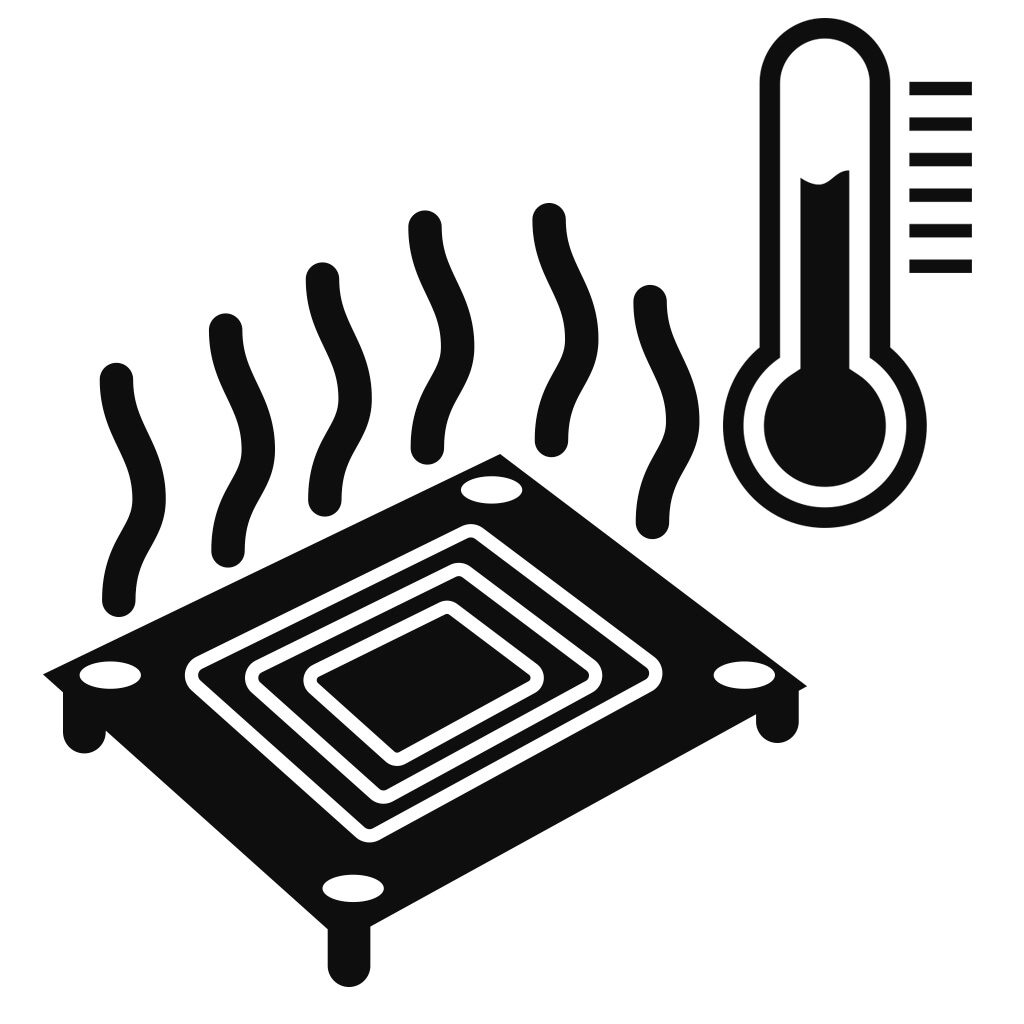
Bed Temp
110-120°C
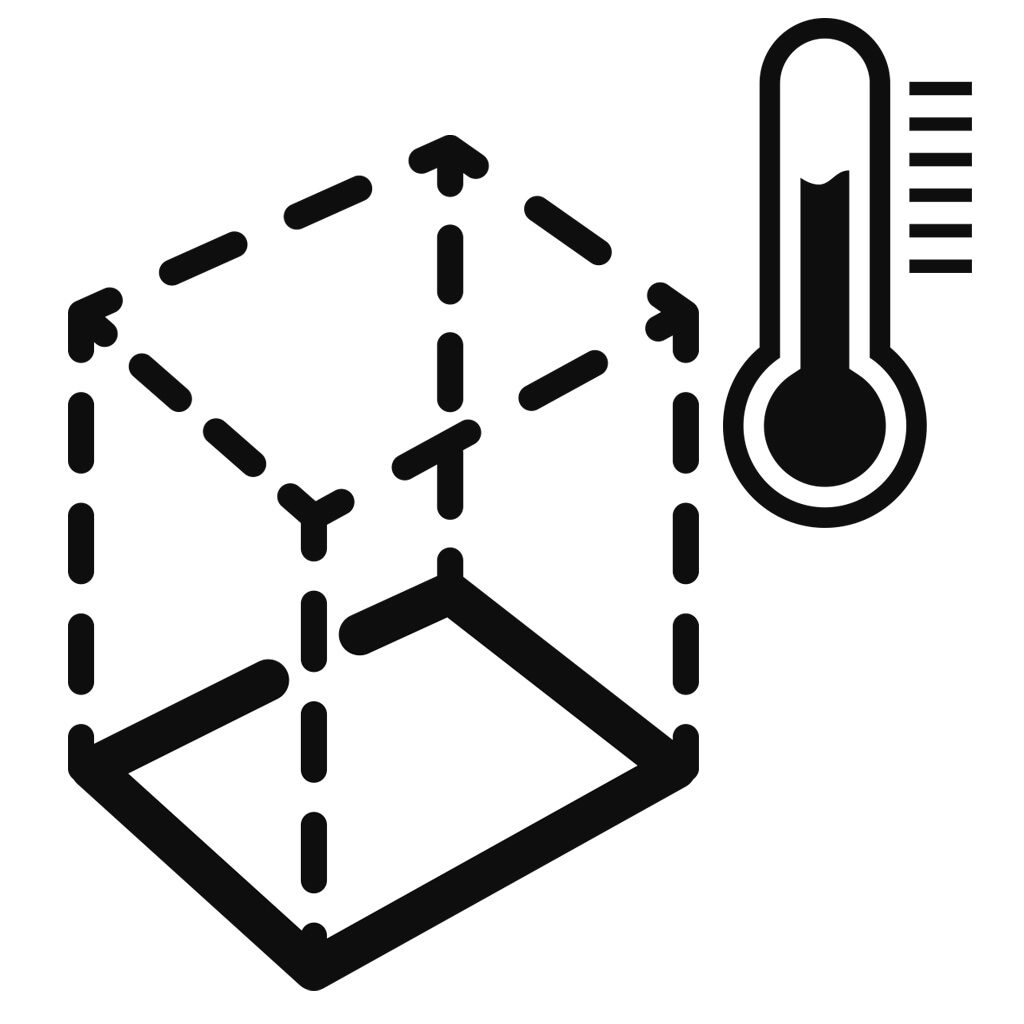
Heated Chamber
Recommended
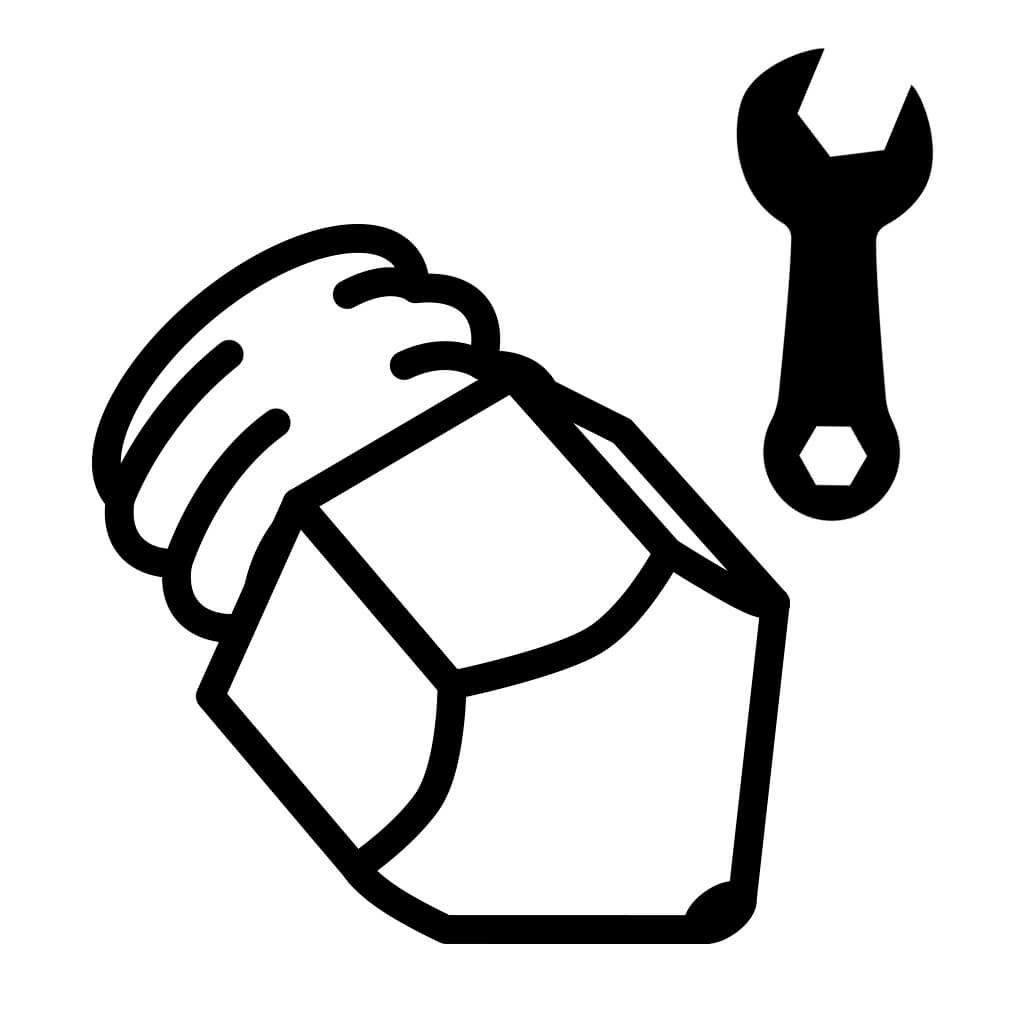
Nozzle Specs
0.4mm diameter minimum
Hardened Steel Nozzle
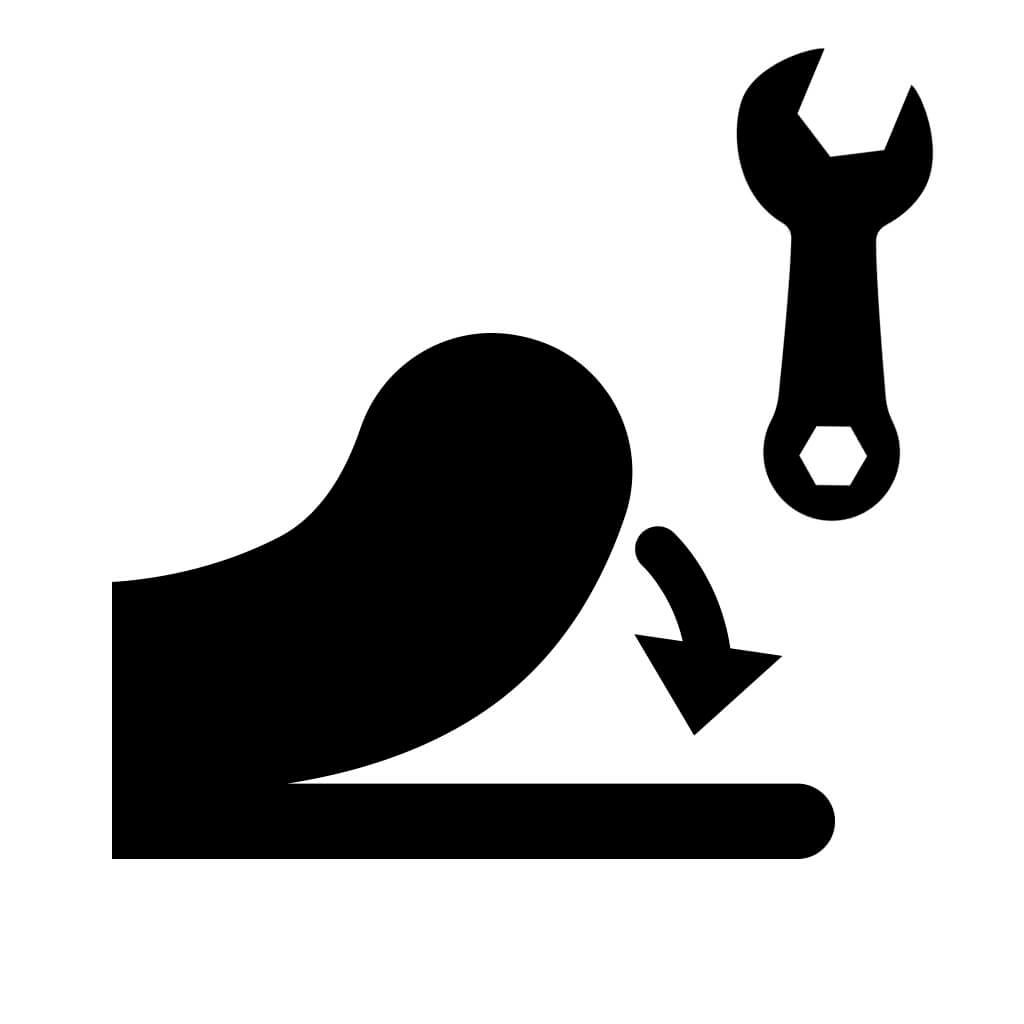
Bed Adhesion
Magigoo Bed Prep
Nano Polymer Adhesive
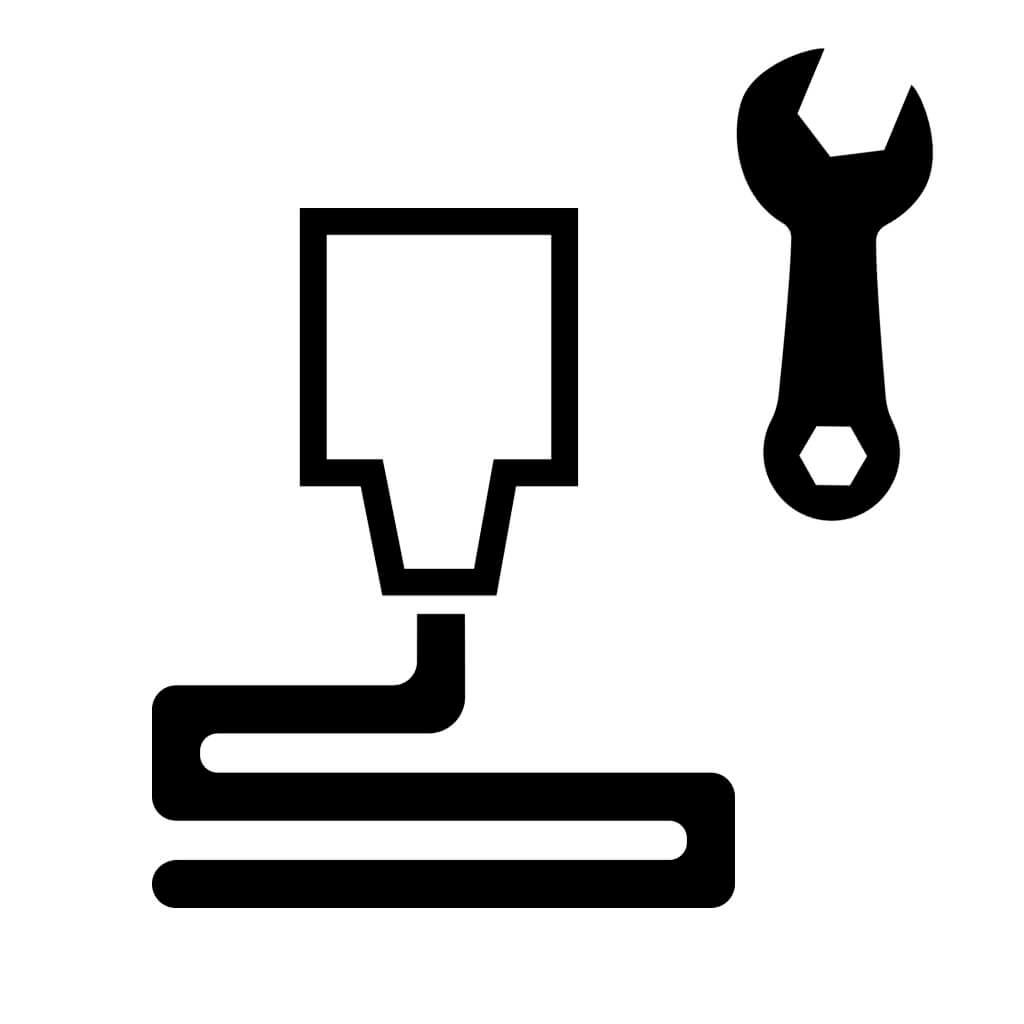
Layer Height
0.25mm or higher
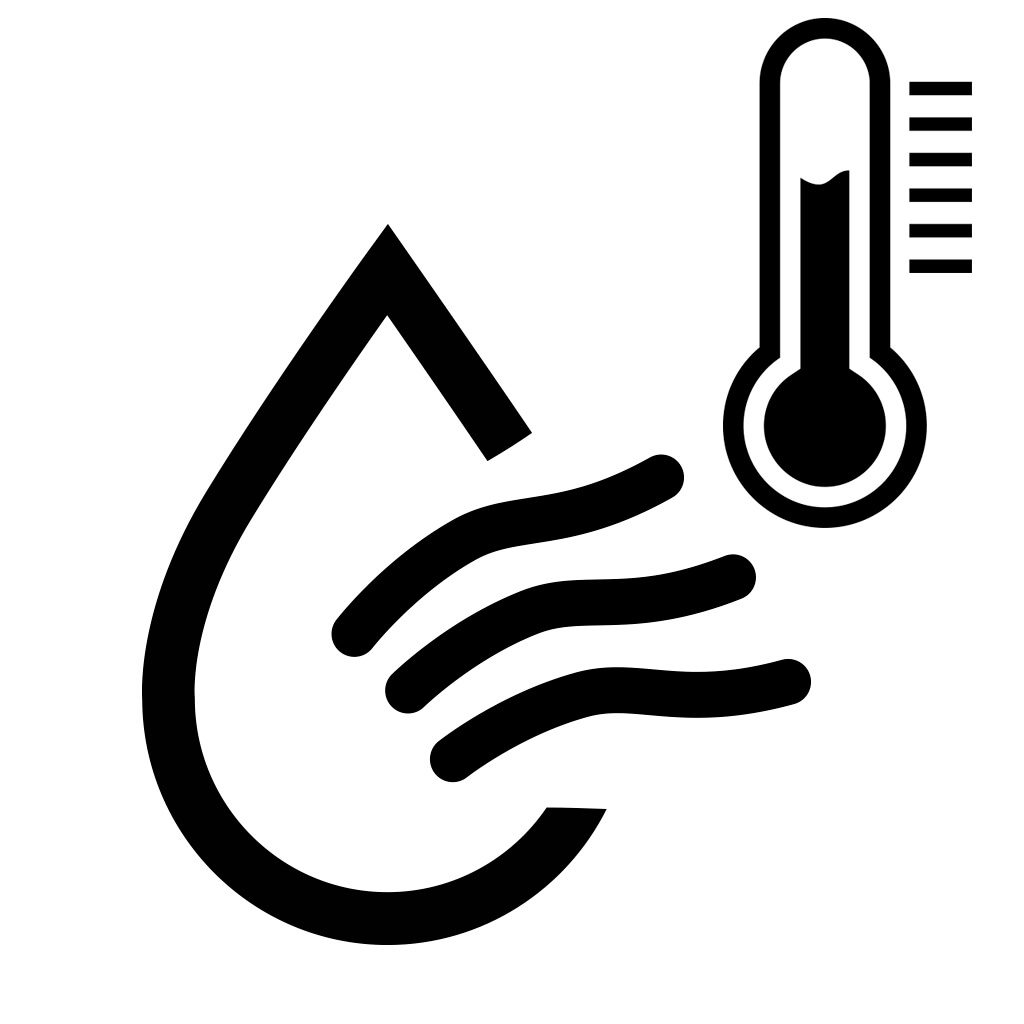
Drying Specs
120°C for 4 hours
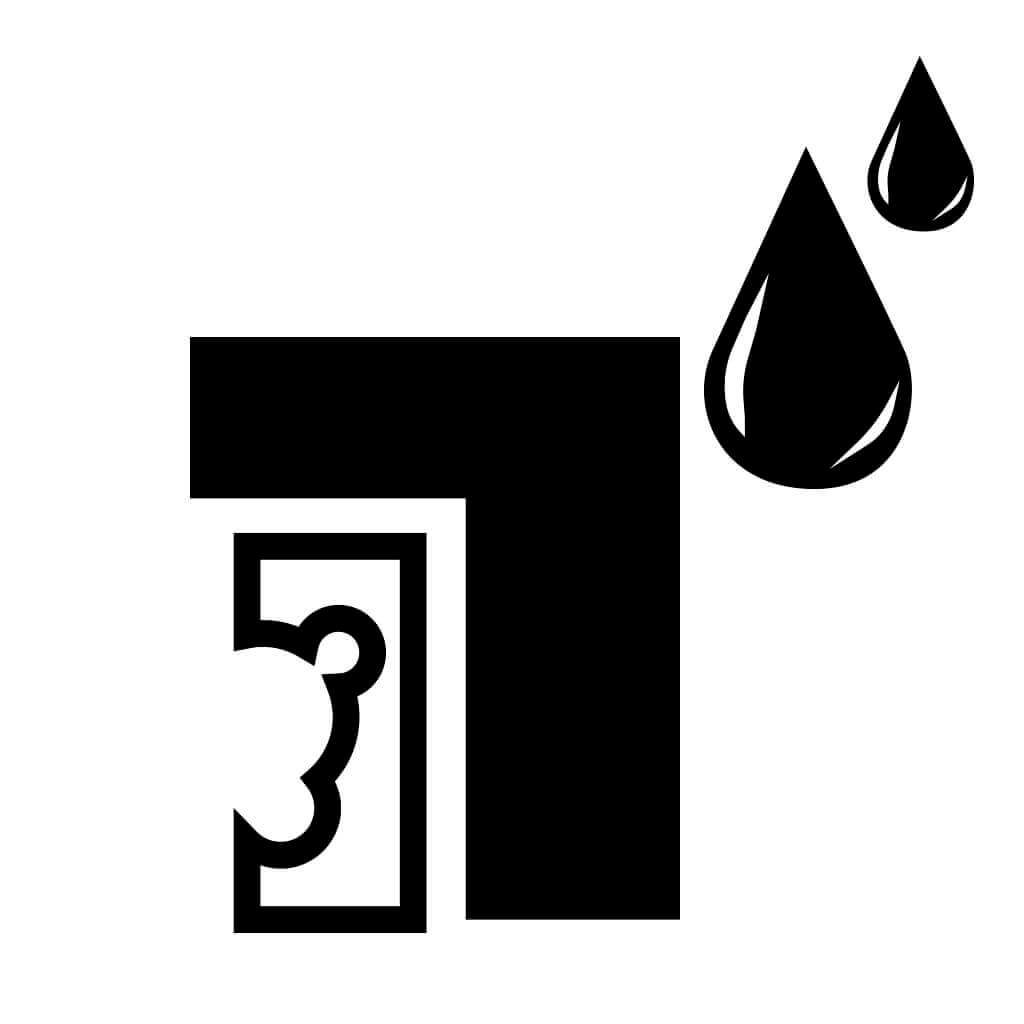
Supports
Water Soluble Support
Benefits of CarbonX™ PC+CF Include:
- High thermal properties, Polycarb itself has a Tg of 147°C
- Amorphous structure gives it low, near isotropic shrinkage
- Further improved stiffness and dimensional stability with the addition of carbon fiber reinforcement
- Very low odor emitted while printing
- Wide processing range of 280-310°C
Filament Specifications:
1.75mm and 2.85mm +/- 0.05mm in diameter
Recommended Print Settings:
- Extruder: 280-310°C
- Bed Temp: 110-120°C
- Nozzle: We currently recommend a hardened steel nozzle with a minimum diameter of 0.4mm.
- Other: Ideal layer height is 60% of nozzle diameter. We do not recommend printing layers smaller than 0.2mm with carbon fiber reinforced filaments.
- Bed Prep: Magigoo Bed Prep Adhesive, Nano Polymer Adhesive, and 3DXTECH Polyimide Tape gives us the best results
- Heated Chamber: Recommended
- Supports: Water soluble AquaTek X1 USM works great for complex parts.
- Drying Instructions: 120°C for 4 hours.
Carbon Fiber Reinforced Filament
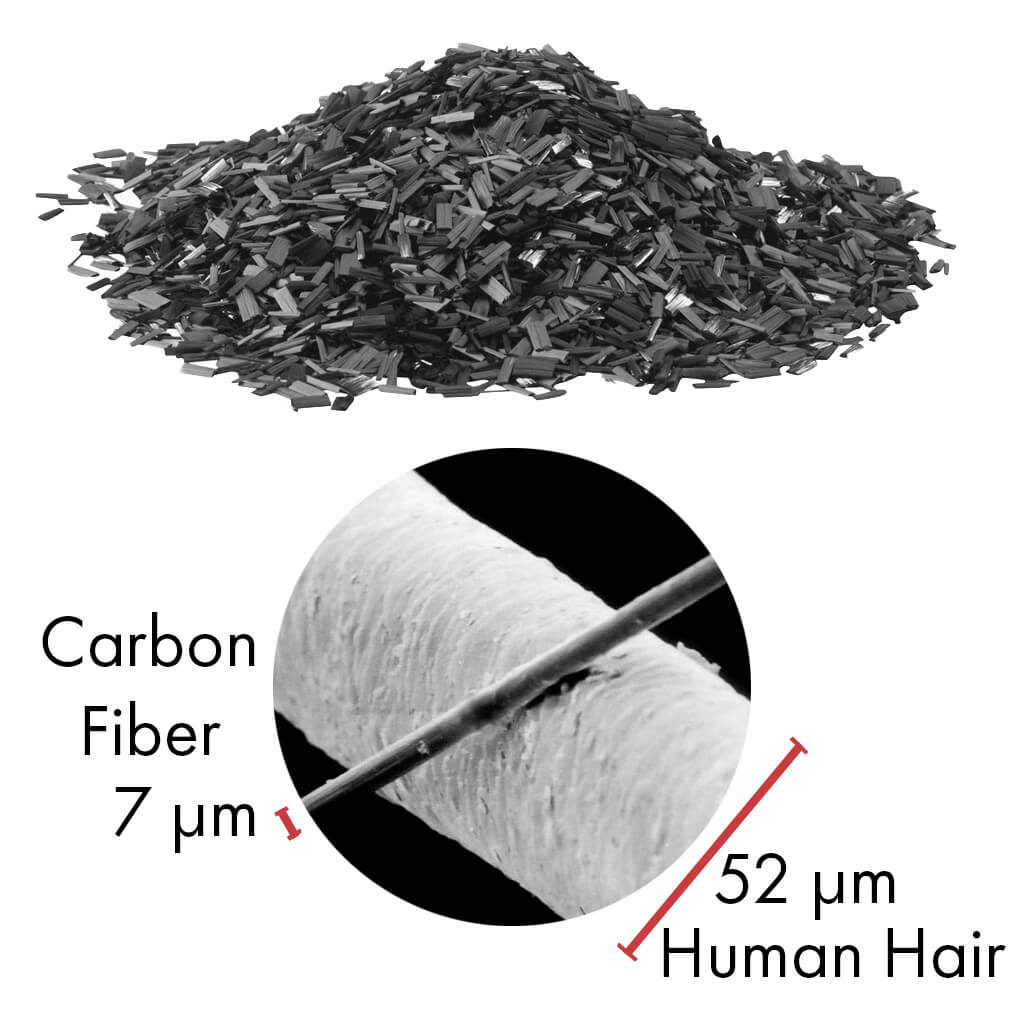
What Is It?
Fibers 5-10 micrometers wide made of carbon. The fibers are aligned following the axis of the material.
This, along with their physical makeup, are what give this material its excellent properties.

What Does It Do?
Carbon Fibers demonstrate a lot of desirable material properties:
- High stiffness
- High tensile strength
- High heat tolerance
- High chemical resistance
- Low weight
- Low thermal expansion
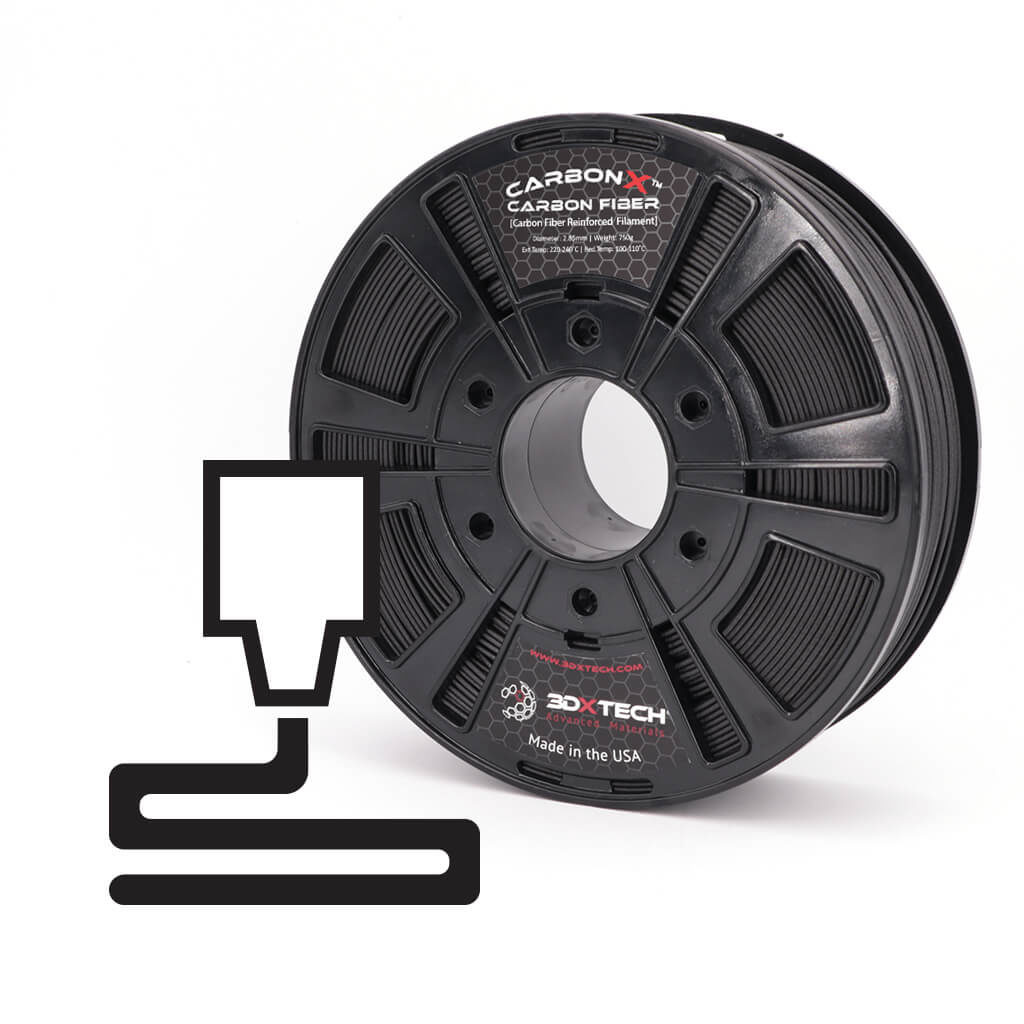
How Does It Work?
Reinforcing plastic with carbon fibers produces a 3D printing filament which exhibits the best properties of both the carbon fibers and the plastic of choice.
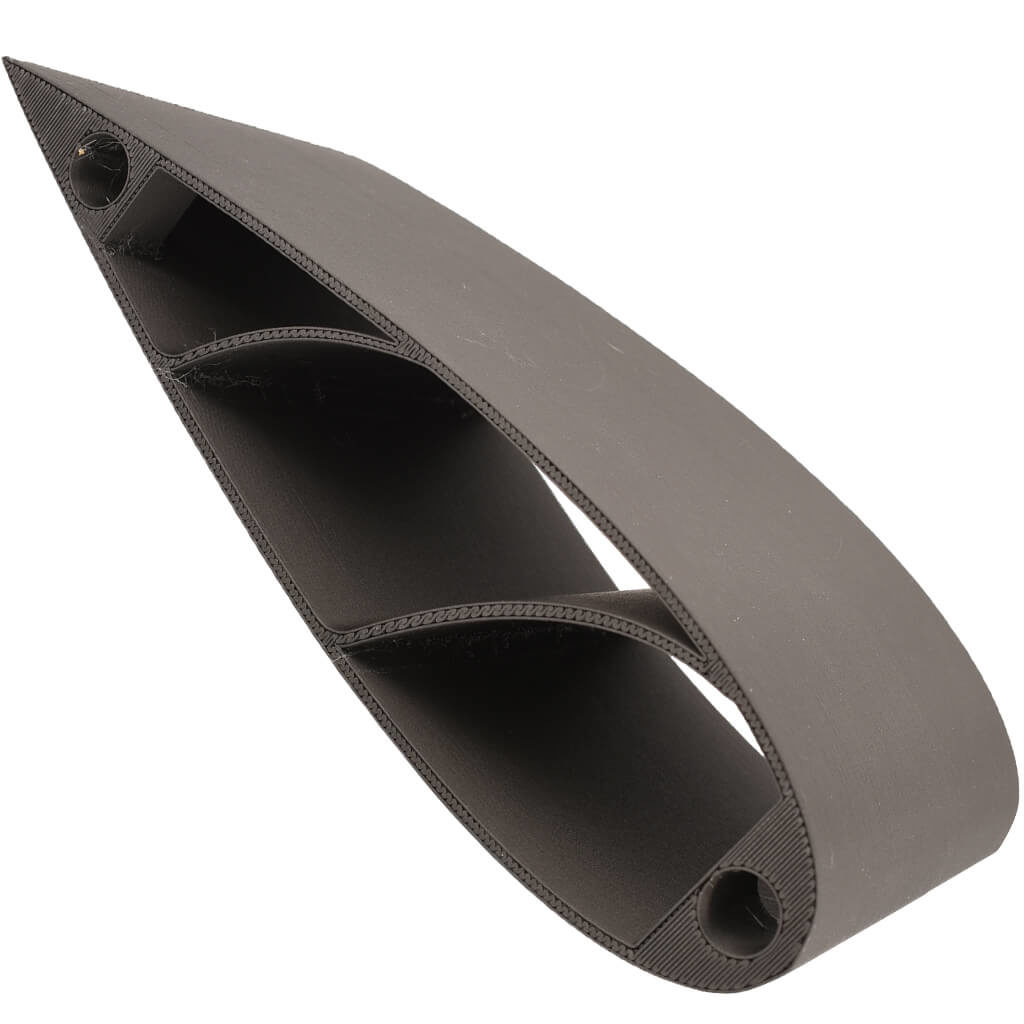
What Is It Good For?
Ideal for any applications which require light weight and rigidity.
Carbon fiber reinforced parts, designed to use less material and save weight, is extremely popular in aerospace, civil engineering, the military, and motorsports.
Abrasive Material
This material is particularly abrasive among 3D printing filaments. Users may find standard brass nozzles are chewed through very quickly compared to standard wear and tear. When worn through, the nozzle diameter will widen inconsistently and the printer will experience extrusion issues.
Because of this, it's strongly recommended this material be printed through a hardened steel nozzle rather than a softer metal. Hardened steel nozzles can often be inexpensive and easily installed depending on your printer manufacturer's instructions.
Questions?
Send us a message and we'll reach out as soon as we can!

